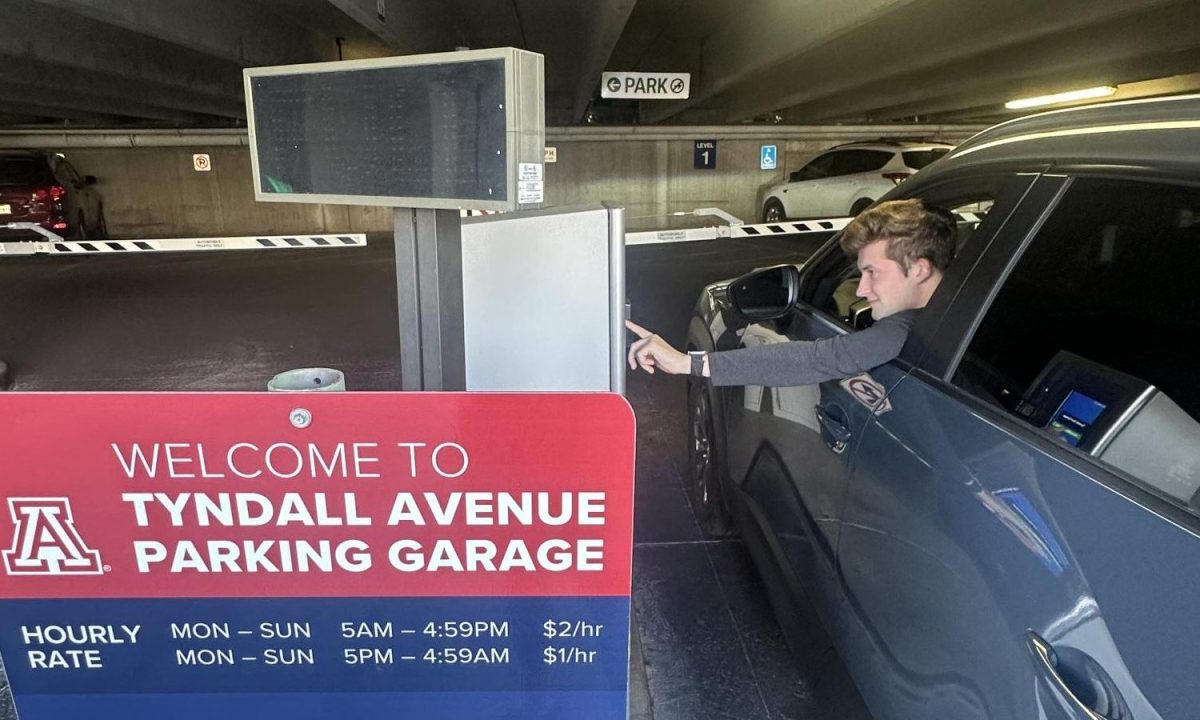In the heat of a Tucson summer, it’s not just grasshoppers that are hissing. Blended into the desert sand, hidden around rocks and shrubs, there can also be the rattle of a diamondback snake. Sometimes it’s too late to notice … until you’ve already been bitten.
After trying to overcome the shock, you’re left with a race against time as you rush to the hospital before the venom starts to course its way through your veins.
University of Arizona’s Dr. Vance G. Nielsen, professor and vice chair of research in the Department of Anesthesiology, recently discovered a treatment therapy that can buy more time for snakebite victims.
Though is too soon to tell what the future has in store for its development, many people can already see how beneficial it could be.
“Given the area we live in — the desert is obviously known is for snakes,” said Rakhi Gibbons, Tech Launch Arizona associate director of biomedical life sciences licensing, who is overseeing Nielsen’s project.
RELATED: UA researchers develop snakebite venom inhibitor
“Animals, our pets, our children and ourselves are exposed to this environment, so having a therapy to extend our time — I think that is going to be important,” he said.
While continuing to progress in his research, Nielsen is collaborating with Tech Launch Arizona to find companies to help bring the treatment to market.
Nielsen came up with the idea for the research around three years ago in a conversation with colleague Dr. Leslie Boyer, the director of UA Venom Immunochemistry, Pharmacology, and Emergency Response Institute. He asked whether anyone had tested modifying a protein called fibrinogen (which deals with blood-clotting) as a substance that snake-venom acts on, and was curious when she said no one had.
After doing testing with carbon-monoxide-iron-based treatments on fundamental animal models, he found the protein helped inhibit various types of snake venom effects. Nielsen is now working on finishing the rest of his animal model series, which may last up to a year or two longer, before he can start experimenting in humans.
“For this project, I think we still need more data in animal testing,” said Lisa Lin, licensing manager for the College of Medicine within Tech Launch Arizona and lead on the project. “For animals, I would say a few years at least.”
That is usually the amount of time that may be required before the FDA can approve moving on to humans, and that clinical process may take up to to a decade or more. However, even without the human aspect, Lin is also looking into the veterinary market.
In the first rounds of animal testing, the research was internally funded through the UA’s College of Medicine, College of Physiology and Tech Launch Arizona’s Asset Development program.
Though it is hard to estimate, Nielsen said the overall costs for funding a complete animal study is around a quarter to a half-million dollars per year.
However, before he can enter the clinical trial phase of his research, Nielsen will need the help of a pharmaceutical and/or an anti-venom company.
That’s where Tech Launch Arizona comes in. The department connects UA technologies to potential, identified companies interested in sponsoring the research and also possibly licensing the product later on.
Nielsen revealed that a few anti-venom companies have already contacted him expressing a strong interest in the complementary drug, and Gibbons said Tech Launch Arizona is currently talking with a number of companies interested, as well. Gibbons did not share the names of the companies.
“I would like think that it is possible that in next five years to see something like this, maybe on the shelf … but it is a slow process,” Nielsen explained. He said the need for “constant communication” with the FDA every step of the way draws out the process, as does the necessary time to completely “nail it down.”
Before he can move on to his next step, Nielsen must also test for toxicity.
“If you have a product that works without important toxicities, it could end up easy as toothpaste to get out to people,” Nielsen said.
RELATED: Lions and tigers and bears: UA offers new zoo and aquarium conservation certificate
“If you identify toxicities or it is not terribly helpful — not saying this or that — it may require a little more medical direction. I mean, ibuprofen wasn’t always over-the-counter, but after a while, they thought it was safe to do that,” he said.
Until it becomes a product, Neilson said he won’t stop his research.
“But we all have a life-expectancy, so it depends on how fast things move along.” He jokes that if does come out as a product sooner, however, he wasn’t planning to immediately retire and might stick around to see what might happen.
“At the same token, it is not like Oxiclean. I am not going to be seen on TV every week. That’s not going to happen,” Neilson said with a chuckle.
Neilson said he predicts the treatment itself will cost around $30 as a product when finished, since around 500mg of the compound costs under $200, and Nielsen finds that only a 5-10 mg dose is needed for an actual snakebite. Also, there are other variables to consider, such as how to package the treatment once it does become a product. However, Nielsen hopes the cost would be substantially less than an EpiPen.
“Bringing any drug into the market is not a small thing,” Nielsen said.
Follow the Daily Wildcat on Twitter









